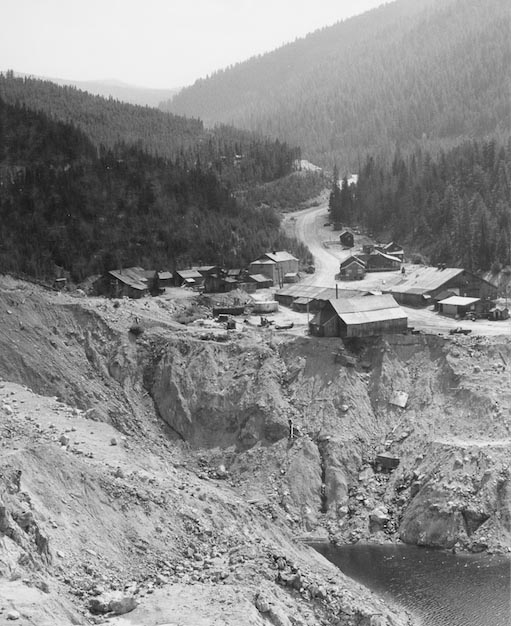Published on June 12, 2018
Midas Gold Idaho wants to keep the community informed about the work we are doing at the Stibnite Gold Project site. The Ask Midas blog series gives the experts in our company a chance to answer some of the community’s most frequently asked questions and help clear up any misconceptions around the project.
Mining has a long history in Idaho. The Stibnite Mining District alone has seen more than 100 years of activity. When many people think of the Stibnite Gold Project, they try to draw connections to historic operations such as Butte, Montana, the Silver Valley area of the northern Idaho Panhandle and Grouse Creek in south central Idaho, specifically in the Yankee Fork drainage basin. But the Stibnite Gold Project will be very different.
IS THE STIBNITE GOLD PROJECT GOING TO BE LIKE OTHER MINING PROJECTS WE’VE SEEN COME BEFORE IT?
The simplest answer is no. There are multiple reasons, but the primary one relates to changes in perceptions around protecting the environment and the resulting strengthening of regulations for modern mining operations.
Prior to 1970, there were no significant state or federal regulations for environmental protection and reclamation at metallic mines. Pre-modern era mines were designed, built and operated to maximize production and minimize cost. Government and industrial managers did not see environmental pollution as a problem at this time or they simply did not have regulatory authority to do anything about it. For example, many tailings facilities from the pre-regulatory mining era were often designed to release the tailings directly into rivers and streams. Historically, Stibnite was no exception – tailings from former operations at our site were directly deposited in drainages from the early 1920s until 1952.
This all began to change when the National Environmental Policy Act was passed in 1969. It was the first of many national policies to guide all types of industrial activities on federal lands including logging, oil and gas development, mining and even building new ski areas. It took several decades for the new environmental laws to effectively be implemented.
Mines designed and built in the 1970s through the early 1990s, during the transitional regulatory era, were often not subject to effective regulatory oversite or consequential impacts from operations were not recognized. Even though protecting the environment was becoming more and more important to local communities, many of these projects were grandfathered and not required to obtain new, more stringent permits as regulatory requirements changed.
In the late 1990s, environmental organizations, land management agencies, mining companies and congress realized changes needed to be made to the regulatory process and the financing requirements for mine site reclamation. This included amending the 1980 Comprehensive Environmental Response Compensation and Liability Act in 2002 to facilitate working with operators at former industrial sites with legacy environmental issues, also known as “Brownfield sites,” to collaborate on cleaning up past damages from previous activities. This would help more sites be restored instead of being shut down or abandoned.
Statistics today show that the changes implemented federally are working. The U.S. Environmental Protection Agency has a National Priority List for cleanup sites across the country. According to a study commissioned by the American Exploration and Mining Association in 2015, former or active mine sites make up 55 of the 1,100 sites listed nationally. Of the 55 mine sites, 49 were mined prior to 1970 and operated before the modern regulatory requirements existed, five were operated from 1970 to 1990 when regulations were starting to be implemented, and just one was operated post-1990. It is important to note that the last site, Barite Hill property in South Carolina, was mined extensively during the 1800s and had extensive impacts prior to the development of modern regulations. Regulations today are having a positive impact on mine reclamation efforts and the government is no longer having to step in with taxpayer funded cleanups.
Even though Midas Gold’s Stibnite Gold Project will be permitted under an entirely different and more stringent regulatory environment, people still compare our project to work in Butte, the Silver Valley and Grouse Creek, a project that took place outside of Stanley. It has been more than 150 years since operations started at Butte, more than 140 years in the Silver Valley and more than 20 years since Grouse Creek was permitted. Projects in Butte and the Silver Valley started long before environmental laws were in place and, even as changes occurred in the regulatory framework, some of their practices grandfathered in.
Today, there are major rehabilitation efforts underway in both Butte and the Silver Valley. Some of these efforts are funded by taxpayers because some mines in these areas were abandoned by operators early in the sites’ history, while others are being funded by mining companies. At Grouse Creek, the current mine owner recognized the problems at the site, including pollution in a nearby river from a faulty tailings storage facility, and shut down the operation. The operators of Grouse Creek have incurred all the costs and taken the actions necessary to voluntarily close and reclaim the site to modern standards. This effort is therefore being funded by the owner, and not taxpayers.
Regulators and mining companies have learned from the problems at former mines sites. Not only are we, as mining companies, required to meet stricter regulations, there are also prescriptive design requirements for some elements at project sites and detailed bonding requirements. Setting money aside for reclamation was not a requirement in the pre-regulatory era and, even as late as the 1990s, it was still a relatively new concept. The first bonding requirements had operators set aside a flat fee per acre – even if that amount didn’t add up to cover the estimated costs of reclamation. Today, Midas Gold and the regulatory agencies will use a proven bonding estimation system to determine what it will actually cost to restore the Stibnite Gold Project and secure the funding for reclamation before any work starts. The costs are calculated based on what it would cost if the government had to do the final closure and reclamation work. The bonds act as financial assurance policies to cover reclamation costs, should anything unexpected occur during operations. This ensures, no matter what happens, money will be available to fund reclamation efforts.
Lack of regulations seem incomprehensible today, however, we now have comprehensive regulations and bonding mechanisms in place because we all want to make sure the past is not repeated. At Midas Gold, we have designed our project to meet the latest in regulatory standards, with the benefit of learning from those who have come before us, and with a strong commitment of leaving the site better than we found it so we can make sure the Stibnite Gold Project restores the site.
If you have a question you would like us to answer, please email it to [email protected].



